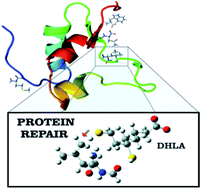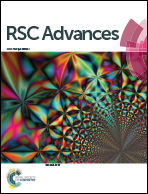Modelling the chemical repair of protein carbon-centered radicals formed via oxidative damage with dihydrolipoic acid†
Abstract
The chemical repair of radical-damaged leucine residues by dihydrolipoic acid (DHLA) in solution has been studied using density functional theory. Because of the low electron affinity of carbon-centered radicals, hydrogen-atom transfer (HAT) reactions were the only ones studied. DHLA was found to repair the radical-damaged leucine residue by HAT from the thiol groups. The calculated rate constants are in the diffusion-controlled regime, which indicates that these reactions are fast enough to be considered a possible repair process for an initially damaged protein with a leucine lateral chain.



 Please wait while we load your content...
Please wait while we load your content...